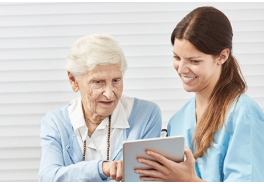Accueil >
Retirement Home > Retirement Home's Activities in Canada
Staying active is essential at any age, but for seniors in retirement homes, gentle exercises can play a particularly important role in maintaining mobility, strength, and overall well-being. Gentle exercises improve circulation, flexibility, balance, and mood, making them ideal for elderly individuals looking to stay healthy in a safe and comfortable way. This guide explores some simple, low-impact exercises that seniors in retirement homes can do daily, helping them stay active and improve their quality of life.
 Benefits of gentle exercises for the elderly
Benefits of gentle exercises for the elderlyAs we age, regular physical activity becomes crucial for maintaining independence, reducing the risk of injury, and managing chronic conditions. Here are some specific benefits of gentle exercises for seniors:
Ask questions regarding retirement homes to our experts
These gentle exercises are easy to do in a retirement home setting, requiring little to no equipment. Each can be done at a personal pace, with modifications for individual comfort and safety.
Seated leg lifts are excellent for strengthening the legs and improving flexibility without putting strain on the lower back.
Benefits: Helps strengthen the thighs and hip flexors, supporting better mobility.
Arm circles are a simple upper-body exercise that promotes shoulder flexibility and helps strengthen the arms.
Benefits: Improves shoulder mobility and upper body strength.
Seated marching is a low-impact cardio exercise that gets the blood flowing and is great for leg strength.
Benefits: Increases circulation, builds leg strength, and is easy on the joints.
Shoulder rolls are excellent for relieving tension in the shoulders and neck, especially for seniors who spend a lot of time sitting.
Benefits: Reduces stiffness, improves shoulder flexibility, and promotes relaxation.
Ankle rotations improve flexibility and strengthen the ankles, which helps with balance and mobility.
How to do it:
Benefits: Increases ankle flexibility, reduces stiffness, and supports balance.
Neck stretches can relieve stiffness and improve range of motion, which is beneficial for posture and comfort.
Benefits: Relieves neck tension, improves flexibility, and can reduce stiffness.
This simple balance exercise strengthens muscles that support stability, helping prevent falls.
How to do it:
Benefits: Builds balance, coordination, and stability.
Breathing exercises may not seem like traditional physical activity, but they are highly effective for reducing stress and promoting a sense of calm.
How to do it:
Benefits: Lowers stress, improves oxygen intake, and enhances relaxation.
Safety is a top priority when it comes to senior fitness. Here are a few tips to ensure gentle exercises are done safely and effectively:
Start slowly: Begin with shorter sessions and gradually increase the time or repetitions as comfort allows.
Use support when needed: Keep a chair, wall, or railing nearby to use for balance or stability during standing exercises.
Listen to the body: Stop if there is any pain, discomfort, or dizziness, and consult a healthcare provider if new pain persists.
Stay hydrated: Even during gentle exercises, staying hydrated is important. Keep water nearby and take small sips throughout the session.
Wear comfortable clothing: Loose, comfortable clothing and supportive shoes provide better mobility and make exercising more enjoyable.
Regular gentle exercise supports seniors’ physical and mental health by:
Staying active through gentle exercises allows elderly individuals to maintain independence, enjoy greater mobility, and live a fuller, more vibrant life. By incorporating these easy and effective exercises into daily routines, seniors in retirement homes can experience a host of benefits that improve both physical and emotional health. Encouraging regular activity—no matter how simple—creates a foundation for wellness that seniors can carry forward each day.
We are here to help you choose a retirement home or facility best suited to your needs. Do not hesitate to contact us at the following number: 343 309 5289.

Find a suitable senior residence